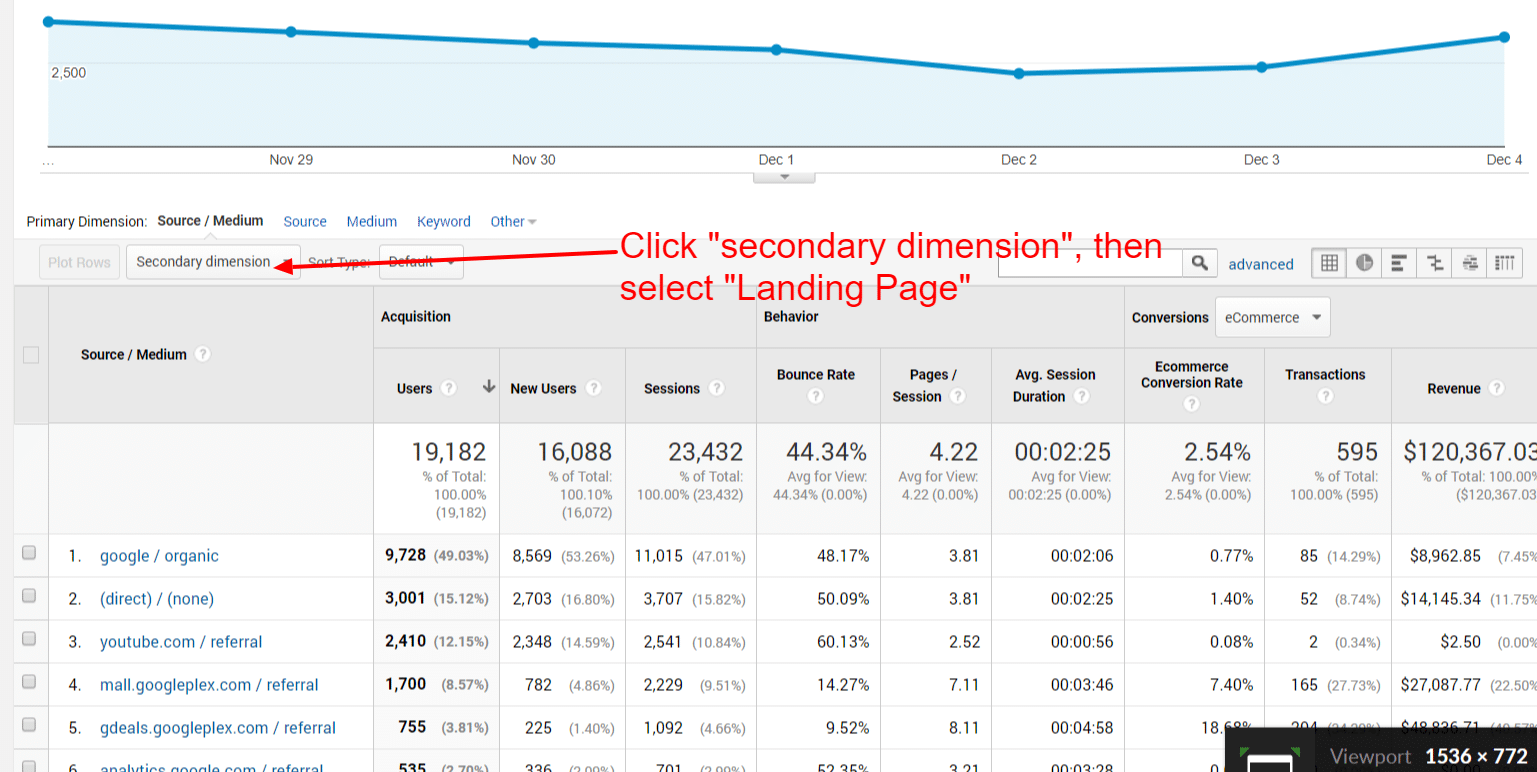Step-by-Step Overview: Leveraging Secondary Dimension in Google Analytics
Wiki Article
Take Full Advantage Of Reporting Accuracy With Second Dimension in Google Analytics
Comprehending exactly how to make the most of reporting precision with second measurements in Google Analytics can considerably improve the depth of insights derived from data analysis. By integrating additional dimensions tactically, marketers can uncover surprise patterns and connections that might not be immediately evident when analyzing key metrics alone.Understanding Second Measurements in Google Analytics
Secondary measurements allow individuals to sector and even more study information beyond the key dimension chosen. While the key dimension might display the overall number of web page views, adding a second dimension such as 'source/medium' can give insights right into where the website traffic originated from.Moreover, comprehending second dimensions is essential for producing extra customized reports customized to specific service objectives. By selecting the ideal mix of additional and key dimensions, analysts can discover patterns, patterns, and correlations that might or else remain concealed. This nuanced strategy to information evaluation empowers businesses to make educated choices based upon an extensive understanding of individual actions throughout different measurements.

Just How to Apply Additional Dimensions
When leveraging additional dimensions in Google Analytics, the practical application entails picking certain data parameters to further improve understandings beyond the primary dimension's scope. To apply secondary measurements efficiently, begin by accessing the record or dataset where you want to dig much deeper right into the information. Bear in mind that second measurements assist offer context and granularity to your primary measurement data, enabling you to extract even more actionable and significant understandings from your Google Analytics reports.Leveraging Secondary Dimensions for Insights
Making use of secondary measurements in Google Analytics enables a more thorough analysis of data, providing beneficial insights past the primary measurement's scope. By leveraging additional dimensions, users can dig deeper right into the performance metrics of their internet site or app, uncovering surprise patterns and trends that might not be quickly obvious when just taking a look at key measurements.One secret benefit of using secondary dimensions is the capability to sector and filter data much more exactly. This can aid experts and marketers better comprehend the actions of details customer segments, such as new visitors versus returning site visitors, or traffic coming from different geographic places.
In addition, second measurements enable users to contrast and contrast different data points within the same report, giving an extra all natural sight of efficiency (Secondary Dimension in Google Analytics). As an example, combining the main measurement of touchdown web pages with additional dimensions like demographics or gadgets can reveal which web pages are most reliable in involving customers on various tools or from various market groups.
Fundamentally, leveraging additional dimensions in Google Analytics equips customers to draw out richer insights from their information, causing even more educated decision-making and eventually, improved performance.
Best Practices for Second Dimensions
When evaluating information in Google Analytics, integrating secondary measurements successfully enhances the deepness of insights acquired from the main metrics. To make the most out of secondary dimensions, it is essential to abide by Get the facts ideal methods that ensure precise and meaningful coverage. It is crucial to select additional dimensions that line up with the key metric you are assessing. Choosing pertinent secondary measurements helps in supplying context and a clearer understanding of the data being analyzed.Additionally, it is advised to restrict the number of secondary dimensions made use of in a single report to stay clear of overwhelming the analysis with excessive details. Concentrating on a few key additional dimensions each time can bring about more actionable and focused understandings. Additionally, consider trying out various mixes of secondary and primary measurements to uncover special trends and patterns that might not appear when taking a look at the data in isolation.
Advanced Analysis Methods With Additional Dimensions
Checking out intricate information partnerships with the strategic application of second dimensions can unveil nuanced understandings that elevate the depth of evaluation in Google Analytics. By combining second dimensions with key information sets, innovative evaluation techniques can be employed to remove useful info.Moreover, secondary measurements can enhance the evaluation of conversion courses by supplying added context. Recognizing the different touchpoints a customer engages with prior to transforming can be critical in enhancing the consumer journey - Secondary Dimension in Google Analytics. By using secondary measurements to look into specifics such as web traffic resources or devices utilized, marketing professionals can tailor approaches to target high-converting channels successfully
Verdict
To improve information evaluation and gain much deeper understandings into individual blog actions, recognizing secondary dimensions in Google Analytics is important - Secondary Dimension in Google Analytics. Second dimensions permit customers to sector and better study data past the main dimension selected. While the key measurement may display the overall number of page views, adding a second measurement check my reference such as 'source/medium' can provide insights into where the traffic originated from.When leveraging additional measurements in Google Analytics, the sensible application entails selecting specific data parameters to further refine insights beyond the main measurement's extent. Remember that secondary dimensions help provide context and granularity to your primary measurement information, enabling you to extract more actionable and significant understandings from your Google Analytics reports
Report this wiki page